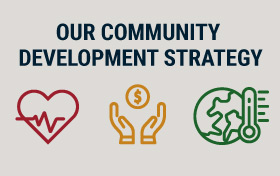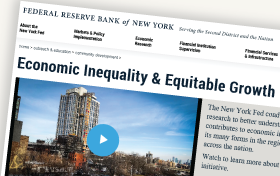Foreign Banking Organizations in the United States and the Price of Dollar Liquidity

Foreign banking organizations (FBOs) in the United States play an important role in setting the price of short-term dollar liquidity. In this post, based on remarks given at the 2022 Jackson Hole Economic Policy Symposium, we highlight FBOs’ activities in money markets and discuss how the availability of reserve balances affects these activities. Understanding the dynamics of FBOs’ business models and their balance sheet constraints helps us monitor the evolution of liquidity conditions during quantitative easing (QE) and tightening (QT) cycles.
Measuring the Ampleness of Reserves

Over the past fifteen years, reserves in the banking system have grown from tens of billions of dollars to several trillion dollars. This extraordinary rise poses a natural question: Are the rates paid in the market for reserves still sensitive to changes in the quantity of reserves when aggregate reserve holdings are so large? In today’s post, we answer this question by estimating the slope of the reserve demand curve from 2010 to 2022, when reserves ranged from $1 trillion to $4 trillion.
What Quantity of Reserves Is Sufficient?
A concern of the Federal Reserve is how to manage its balance sheet and whether, over the long run, the balance sheet should be small or large. In this post, we highlight results from a recent paper in which we show how, even during a period of “ample” reserves, the Fed’s management of its balance sheet had material impacts on funding markets and especially the repo market. We argue that the Fed’s “balance-sheet normalization” from March 2017 to September 2019—under which aggregate reserves declined by more than $950 billion—combined with post-crisis liquidity regulations, stressed the intraday management of reserves of large bank holding companies that are active in wholesale funding markets resulting in higher repo rates and spikes in such.
Since the Financial Crisis, Aggregate Payments Have Co‑moved with Aggregate Reserves. Why?
From Policy Rates to Market Rates—Untangling the U.S. Dollar Funding Market

How do changes in the rate that the Federal Reserve pays on reserves held by depository institutions affect rates in money markets in which the Fed does not participate? Through which channels do changes in the so-called administered rates reach rates in onshore and offshore U.S. dollar money markets? In this post, we answer these questions with the help of an interactive map that guides us through the web of interconnected relationships between the Fed, key market players, and the various instruments in the U.S. dollar funding market, highlighting the linkages across the short-term financial products that form this market.
Why Pay Interest on Excess Reserve Balances?

In a previous post, we described some reasons why it is beneficial to pay interest on required reserve balances. Here we turn to arguments in favor of paying interest on excess reserve balances. Former Federal Reserve Chairman Ben Bernanke and former Vice Chairman Donald Kohn recently discussed many potential benefits of paying interest on excess reserve balances and some common misunderstandings, including that paying interest on reserves restricts bank lending and provides a subsidy to banks. In this post, we focus primarily on benefits related to the efficiency of the payment system and the reduction in the need for the provision of credit by the Fed when operating in a framework of abundant reserves.
Why Pay Interest on Required Reserve Balances?

The Federal Reserve has paid interest on reserves held by banks in their Fed accounts since 2008. Why should it do so? Here, we describe some benefits of paying interest on required reserve balances. Since forcing banks to hold unremunerated reserves would be akin to levying a tax on them, paying interest on these balances is a way to eliminate or greatly reduce that tax and its negative effects.
Just Released: Fed Proposes Simpler Rules for Banks’ Reserve Requirements
Reserve requirements—a critical tool available to Federal Reserve policymakers for the implementation of monetary policy—stipulate the amount of funds that banks and other depository institutions must hold in reserve against specified deposits, essentially checking accounts.















 RSS Feed
RSS Feed Follow Liberty Street Economics
Follow Liberty Street Economics